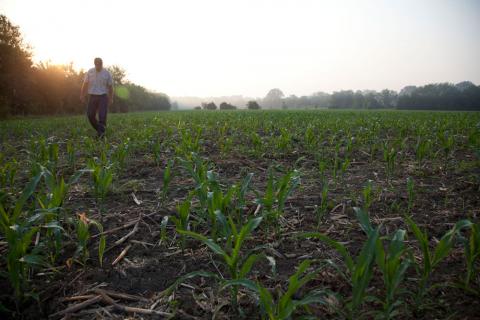Tes Randle Jolly | Originally published in GameKeepers: Farming for Wildlife Magazine. To subscribe, click here.
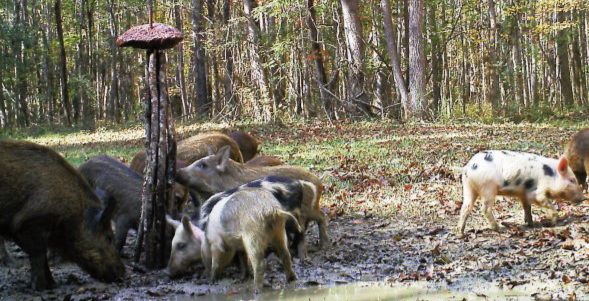
Feral hogs. Few topics incite expletive-laced rants among land managers and hunters as conversations about wild hogs. Whether you like them for the hunting and meat opportunities, or would happily see every last one of them sent to “hog hell” for their devastating impact on habitat, crops and waterways, or your opinion waffles somewhere between, wild hog populations are an environmental threat on a national scale. Nationally, agricultural damage and control costs associated with feral hogs are estimated at over $1.5 billion annually.
Hogs Gone Wild
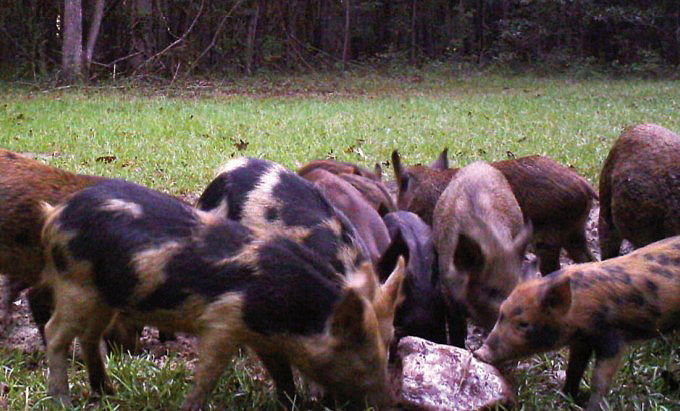
On our central Alabama property, The Randle Farm, and neighboring lands, feral hogs are a major problem. Occasional sightings and sign of lone boars began in 2008. Those infrequent sightings were exciting opportunities to put more meat in the freezer while deer or turkey hunting. On the positive side of a negative issue, we view wild pork meat as excellent natural, culinary cuisine. Think BBQ, pork chops and homemade sausage, and being able to share extra meat with others in our community.
Unfortunately, pigs do two things very well. They reproduce year-round, at an early age, producing masses of hungry little pigs, and destroy or damage valuable agriculture, wildlife forage and habitat.
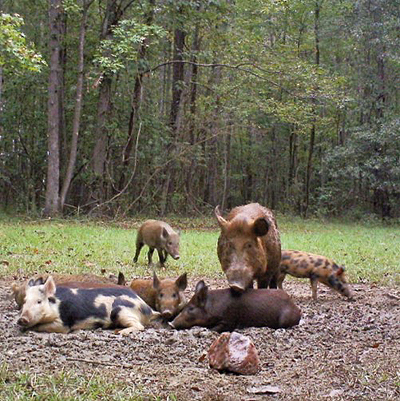
mineral sites in low areas that held rainwater. The “Bee
Plot” site shown here is large and was established over
twenty years ago, long before the feral hog invasion.
By 2012, our quality deer management efforts were seriously threatened. Prolific reproducers, hogs multiplied quickly in nearby dense swamps and thickets. Food plots were being raided throughout the summer and fall by several different sounders of 10-25 pigs. When peas, chufa and corn were growing, the porkers made mostly nighttime raids, retreating to their watery hideouts before daybreak. Wasteful critters, pigs pushed over corn stalks, chomped a few bites of corn, and then left the rest to spoil as the greedy swine moved on to the next stalks. The snout-powered, four-legged dirt movers not only decimated the cultivated food sources, they wreaked havoc on the habitat, native plants and waterways.
As our anger and frustration rose, the pig wars were declared. Diligent monitoring and planning were required in our efforts to eradicate or at least control their numbers. We found them highly intelligent, extremely adaptable and frustratingly difficult to eradicate. In addition to those traits, add the intentional and often illegal release, (as is the case in our area), into previously pig-free areas for hunting, and you have what we are experiencing today. Thankfully, we’ve co-opted with our neighboring landowners and implemented a strict, no mercy, “pigs play, pigs pay,” year-round control plan that includes trapping and still-hunting, stalking and dog hunting. A depredation permit allows nightly “pig patrols” that help deter the frequency of raids on food plots. All age groups and both genders are targeted.
Mineral Site Solution
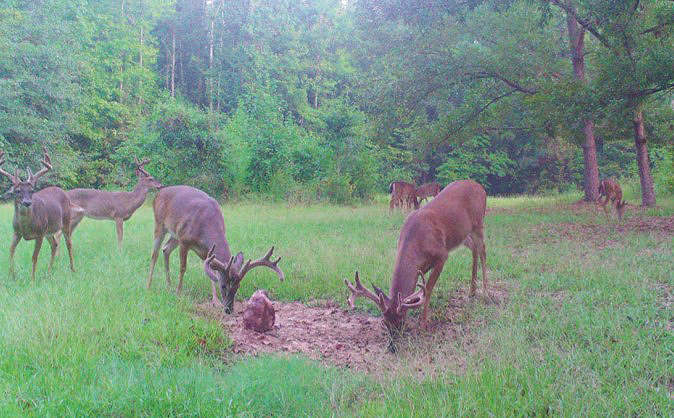
Adding insult to injury, trail camera surveys alerted us to another way feral hogs were negatively impacting our wildlife management efforts. Photos showed pigs visiting our mineral lick sites, especially when the area held water after a rain. Happy pigs wallowed in the mud, fouling the area, while others rolled pig-slobbered BioRocks around with their snouts.
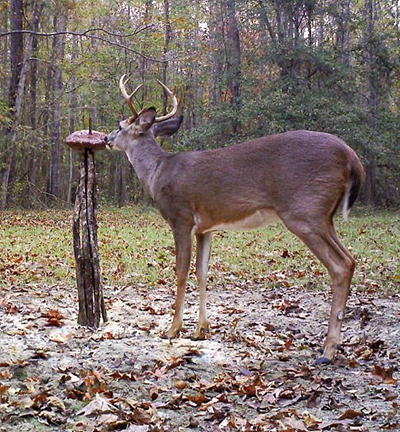
licking the BioRock usually within a month. Note: suitable
lengths of saplings are attached to the T-post for a natural
look.
Photos showed that when pigs began visiting a mineral site, deer avoided the area. Anxious to keep a clean mineral source available for the deer, we created new locations, avoiding areas that would pool water. Pigs eventually found the sites. Natural stumps that were high enough and located in a favorable area were hard to find.
Like the old adage, “Necessity is the mother of invention,” it was obvious a solution must be found. Elevation was key to solving the problem, so, with a “MacGyver mindset” we gathered what was on hand and devised a quick, easy and economical way to put distance between a BioRock and a pig’s snout. Our solution is just one way to elevate a mineral source. Use your imagination and supplies on hand, and/or natural supplies nearby to construct your own. See the accompanying photos for a step-by-step guide.
On average, trail camera photos showed it took deer up to four weeks to acclimate to the new site and begin licking the elevated rock. Deer visits increased while hog appearances dropped off, plus they (pigs) spent less time at the site. Naturally, rains will wash some minerals to the soil below, however the BioRock remains attractive and accessible to deer.
There’s not much glory in outsmarting a pig, but even the small battles won in the pig wars are reason enough to celebrate!

















